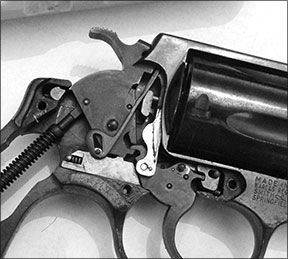
When it comes to challenging a shooter, nothing does so quite like a snub nose .38 or a lightweight magnum revolver. Each is light, kicks more than other revolvers, and the short sight radius makes marksmanship more difficult. There are always folks looking for a shortcut to proficiency but there are no short cuts. Quality firearms are not inexpensive, but skill at arms is purchased with a different coin. Unfortunately, short cut attempts can lead to problems. We sometimes find shooters replacing the revolver mechanism springs in pursuit of a smoother trigger action. This can leave the revolver no longer reliable and it ends up in our shop.
My basis for a fix is to start over and dump any suspect parts. If you do not have good information as to the quality of the springs or where they came from or which ones were changed, you probably need to replace the whole set. A quality set from Wolff Gunsprings solves a lot of problems. This at least restores the original operating condition.
When working with Smith and Wesson revolvers, we need to have sufficient spring force to crack the primer. Different models use different types of mainspring and both leaf and coil springs must be understood. I never change the mainspring of a double action revolver for a lighter version without accompanying action work. Never! If the mainspring is worn, such as with a 1950s vintage J frame I recently worked on, I use a full power version from Wolff. Just the same, when we find a revolver that is not as smooth as desired and the initial thorough cleaning doesn’t improve that, we need to look further. My rule for a revolver refurbished without action work is to use all top quality, original strength springs. For a revolver with a good action job, full strength springs may still be used for maximum reliability. Lower power springs may only be used when the action has been smoothed by hand work to the point that the smoother action is still reliable with lighter springs. In short, the force imparted by the firing pin, whether hammer mounted or frame mounted, remains approximately the same.
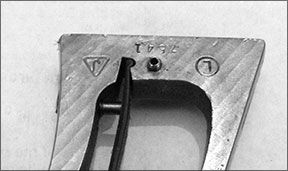
There are some tricks that work well for the occasional unusually heavy trigger action. In my experience, the stainless steel Model 66, 681, 60 and others seem to exhibit a heavier trigger action than blue steel revolvers of the same design and model. I have developed a technique that works well with lightening the action while maintaining the proper trigger action. If necessary, I bend the very tip of the mainspring just enough to be perceptible. This usually makes for a slightly lighter action while maintaining the ability to crack hard primers. I do not like to adjust strain screws if the revolver is firing on demand but if the action is unusually heavy I may back off the spring strain screw a quarter turn – no more – for adjustment. The revolver must then be checked for function and if there is any problem at all, return the spring strain screw to the factory setting.
It is important to understand that some primers are more difficult to crack than others. When testing I normally use my own handloads using CCI Magnum primers. It is no criticism that CCI Magnum primers demand the greatest force to crack as the heavy cup is needed to prevent pierced primers when these primers are used in the heavy loads they are specifically intended for. Magnum primers simply have a greater flame pressure – hotter and longer – which is necessary to burn large charges of powder.
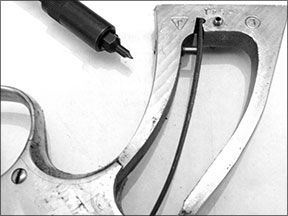
Understanding that Magnum primers will increase pressure in standard loads, I work up a few standard pressure loads of known reliability for testing .38 Special revolver reliability. In the .357 Magnum full power loads are used. If the revolver tested will crack CCI Magnum primers they will crack anything else. If you do not handload most foreign-produced brands have harder primers.
Handgun Geometry
When you look at the J frame revolver and especially the “hammerless” revolvers – they are actually concealed hammer designs – you will see that a lot of springs and mechanism are packed into a small package. The hammer of the Smith and Wesson 442 is designed to hide within the receiver hump and demands a special design to be effective. If you decide to do a trigger job on the J frame, lighter hammer springs may be used only if you do a successful trigger job, as simply changing to a lighter hammer spring will result in misfires because of the original parts and roughness. When the hammer and trigger contact points are well polished and honed, a lighter hammer spring is sufficient to break the friction of the action. Conversely, performing only the action job and doing so properly will result in a smoother action that retains its reliability without changing the action springs. There is really only one way to do it right. With sufficient skill and polish in the action, aftermarket springs may be the icing on the cake. Without proper action work, they are a spoiler.
A misunderstood and often misapplied spring resides within the rebound block. This is the trigger return spring. The trigger return, also called the rebound spring, is responsible for the reset of the double action trigger. Fire-reset-fire-reset is the cadence that accomplished double action shooters rely upon. The rebound block is typically located under the hammer. The trigger is run forward from the most rearward position after firing by the rebound spring. The square bump on top of the rebound assembly is called the seat by factory personnel. The rebound also performs another function. The bump on the top of the rebound meets a similar bump on the hammer. The rebound helps move the hammer out of the line of contact with the cylinder, allowing cylinder rotation for following shots.
You can imagine what will happen if the trigger rebound spring is too light. The trigger will not properly reset and this is the most obvious symptom of this problem. The hammer may also not be moved to the rear as needed, resulting in binding. The trigger may even move to the rear and stay there and not return to the forward position if the rebound spring is of insufficient strength. This little rebound does more than most shooters realize it does. A tool well worth purchasing is the Brownells S&W Rebound Slide Spring Tool (part #080-666-000WB). This part alleviates the common chore of making such a tool from a screwdriver.
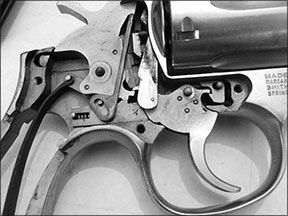
The only proper course of action when doing an action upgrade is to carefully polish both the hammer and the rebound to mirror polish. The square on the rebound and on the hammer must be polished, making certain to maintain original geometry. Once this is done, the twelve pound Wolff replacement rebound spring may be used, but not before.
Brownells also offers a spring replacement kit designed by Walter Wolff (a good choice to have in stock) as well as an upgrade combination of springs and parts. These kits are an excellent combination for those who wish to upgrade their lightweight snub nose revolvers.
Getting The Revolver Ready
A revolver isn’t dreadfully complicated to clean, but judged by some of the revolvers that come to the bench, folks do not know how to clean them. I have a program that I believe works well for cleaning any firearm. Before I move to solvents and other wet cures, I begin with the dry treatment. This means a brush and a clean cloth designed for gun cleaning. It is a simple matter to remove the cylinder from the crane in the case of most revolvers. The stocks should be removed at this point as well. With the cylinder off and laid aside, inspect the breech face. The breech face, front of the cylinder, and blast shield often have plenty of accumulated crud from lead bullet loads and incomplete powder burn. A dry bronze cleaning brush is a good tool to use here. I do not resort to a chisel as this may mar the finish but I carefully use the brush to clean deposits at this point. Once the crud is removed with the dry process we move to using Hoppes with the wet solution. Only by first properly cleaning the revolver will we be able to accomplish a good trigger action. I know folks should clean their own handguns but many times it is left to the gunsmith to do so. This is simply something we must do correctly and must charge the client for doing.
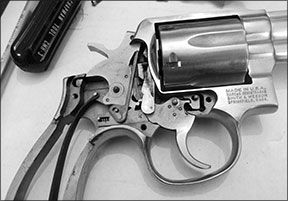
When cleaning a revolver it is important to run the brush not only through the bore but also through each cylinder separately. The front of the cylinder gets its share of attention at this point. The breech face and forcing cone must be addressed as well. There is often a strong build up of lead deposits in the cylinder, especially when the shooter has fired large amounts of .22 Short rimfire in his .22 caliber Long Rifle cylinder, .38 Special in the .357 Magnum or .44 Special in the .44 Magnum. A good way to clean the cylinder is to place the cylinder in a padded vice and hook the cleaning rod to a drill. Set it for the slow RPMs and carefully clean the cylinder. Remember; do not push the brush out of the cylinder. Run the brush into the cylinder about where the cartridge case headspaces. If you run the brush all of the way out of the cylinder you will compress it and it will not be good for very much more cleaning.
Once the revolver is clean, there are a number of means of adjusting revolver spring tension and all seem to work for various practitioners. A rebound spring that is too light or too heavy in particular will really do a number on good function and smoothness. In the end, the polish and sometimes bending of the mainspring is what works best for most. For a full blown action job on the K frame, shortening the strain screw also pays dividends.
Of course, action jobs come out best when the revolver is of good quality and properly set up from the factory. When you have a dragging cylinder or a revolver that drags on one chamber more than others you are going to have more trouble. This is when we earn our pay. When addressing the revolver action job remember only a thorough job is worth doing. Simply replacing springs is not something that we need to be doing. We must do the business correctly by improving the action first and the springs only as necessary.



























